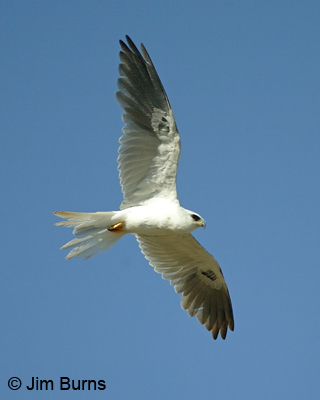
Though it may not be familiar to non-birders, "kite" is the name given to a group of daytime raptors known primarily for their graceful flight and their ability to capture large insects on the wing. Five of these may be found in North America and two of them, the Mississippi Kite and the White-tailed Kite, occur in Arizona. If you're familiar with these aerobatic hawks, you're thinking their name must be derived from the high flying paper toys you played with as a kid on windy days.
You would be wrong. Just the reverse is true. The kites of windy day pastime took their name from the bird, which begs the question about the etymology of the birds' name. One school of thought relies on onomatopoeia, the idea that the birdname reflects their vocalizations, but any birder who has heard the piercing whistle of the Red Kite of Europe will doubt this theory.
As is often the case with birdnames, the origin of "kite" is obscured in history, but most likely comes from the Indo-European root word, skut, or "shoot," referring to the bird's ability to go swiftly or swoop down upon its prey when hunting. So why is one of the two Arizona breeding species of kite called Mississippi Kite? Again as is often the case, the answer is because the initial specimen of this species discovered and described to science was taken in the state of Mississippi.
Mississippi Kite is a migratory species which winters in South America and nests primarily in our Southeastern states, but there is a non-contiguous population which breeds along the San Pedro River in southern Arizona. White-tailed Kite, named for the color of its tail, is a non-migratory species which nests along the California coast and sparingly eastward through southern Arizona, occasionally as far north as Casa Grande.
White-tailed Kites' post-breeding dispersal often brings them to agricultural and open desert areas of Maricopa County and the Valley of the Sun this time of year, so winter is a good time to be on the lookout for these elegant and graceful aerialists. Watch for them "kiting," hovering motionless into the wind, over recently plowed fields and, after a successful capture, watch them dispatch and eat their prey on the wing.
Check out alfalfa and hay fields in the far west Valley and cotton fields on Native American lands east and south of Phoenix. Kites, like all birds, are opportunists with generations of learned survival behavior. I saw my most recent Maricopa County White-tailed Kite following a tractor working a cotton field next to Indian School Road just east of the 101, hovering right above the driver, waiting for the insects stirred up. As I watched I was wishing I had put kite on my Christmas list and had a chance to relive some of my youth.